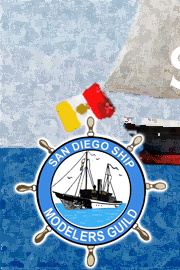|
Parts of a Line

|
 |
1) Working end: The end being used to haul, tie, or belay the line.
2) Standing part: Any part between the two ends.
3) Loop: A loop made by turning the line back on itself and crossing the standing part.
4) Bight: A loop made by turning the line back on itself without crossing the standing part.
5) Standing end: The end opposite to that being used to haul, tie, or belay the line.
|
|
Whipping a Line

|
 |
1) Lay loop of twine towards working end of line; wrap the twine around loop and line towards working end.
2) Whipping width should be about the same as the line's diameter; thread end of twine through loop.
3) Pull both ends of twine taut and trim.
|
|
Seizing a Line

|


|
1) Loop center of twine over one strand of the line.
2) Begin first layer of turns by laying end of twine between the line strands over other end of twine.
3) Wrap twine about both line strands so that turns are parallel to each other; pull each turn tight.
4) End first layer of turns by reeving the twine between the line strands; pull tight.
5) Begin second layer of turns laying them in grooves between wrapping turns; pull each turn tight.
6) End second layer of turns by reeving the twine between the line strands; pull tight.
7) Begin first frapping; reeve twine ends between line strands on other side of wrappings; pull tight.
8) Begin second frapping; reeve twine ends between line strands again; tie a half knot and pull tight.
9) Reeve twine ends between the line strands again; tie a second half knot to the first (making a square knot.)
10) Pull the second half knot tight so that the square knot is between the line strands; trim twine ends.
|
|
Belaying a Line

|
 |
1) Determine from which side the line will approach the belaying pin.
2) Cross the rail and pass line under pin from approach side; loop line over top of pin from approach side.
3-5) Alternate loops on bottom and top of pin from the approach side.
6) Thread working end under final loop and cinch snug.
|
|
Deadeye Lanyards

|

|
1) Start portside; note inboard and outboard views of the port rigging.
2) Make a stopping knot and thread lanyard through top deadeye's aft lower hole from the inboard side.
3) Thread lanyard through lower deadeye and remaining deadeye holes.
4) Thread lanyard between deadeye and gap under shroud to outboard and loop around under itself on inboard side.
5) Wrap lanyard several turns around shrouds.
6) Whip working end of lanyard to aft standing part of shroud.
7) Rig companion on starboard; repeat steps 1-6 for each pair of shrouds alternating from port to starboard.
|

|
|
|





